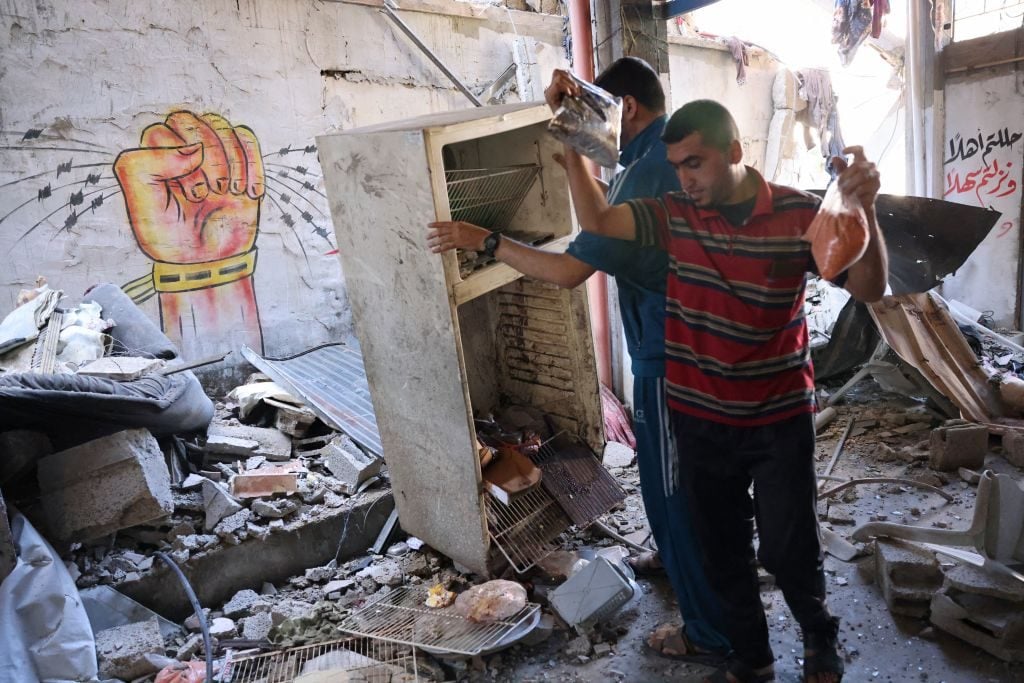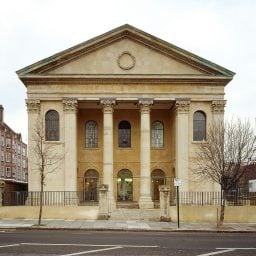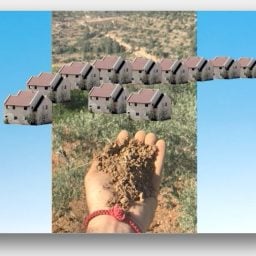On May 10, Israeli Defense Forces (IDF) gave Gazan artist Mohamed Abusal five minutes to evacuate his home. “My neighbor called me to say they would attack in just a few minutes and that we had to leave,” he told Artnet News over Zoom. He went to a friend’s house, leaving all his belongings, including everything in his art studio. As Abusal spoke, the electricity went off and his face became obscured by darkness. Under fire, Gazans have been running low on internet access and fuel.
“I cried when I left my home. I have my artwork there and I can’t do it again.”
The other night, Abusal’s friend, artist Raed Issa, also had his home destroyed. He wasn’t given a warning. It was the second time his home had been wrecked in an attack by Israelis.
“We have very limited electricity and internet now and this is preventing us from communicating with the outside world,” Abusal said. “But this has become our lifestyle now in Gaza, hiding from the Israeli bombs. We are under the blockade. We cannot travel. We cannot move. But still through my art, I try and find the beauty in the concrete mess that is Gaza, that we live in.”
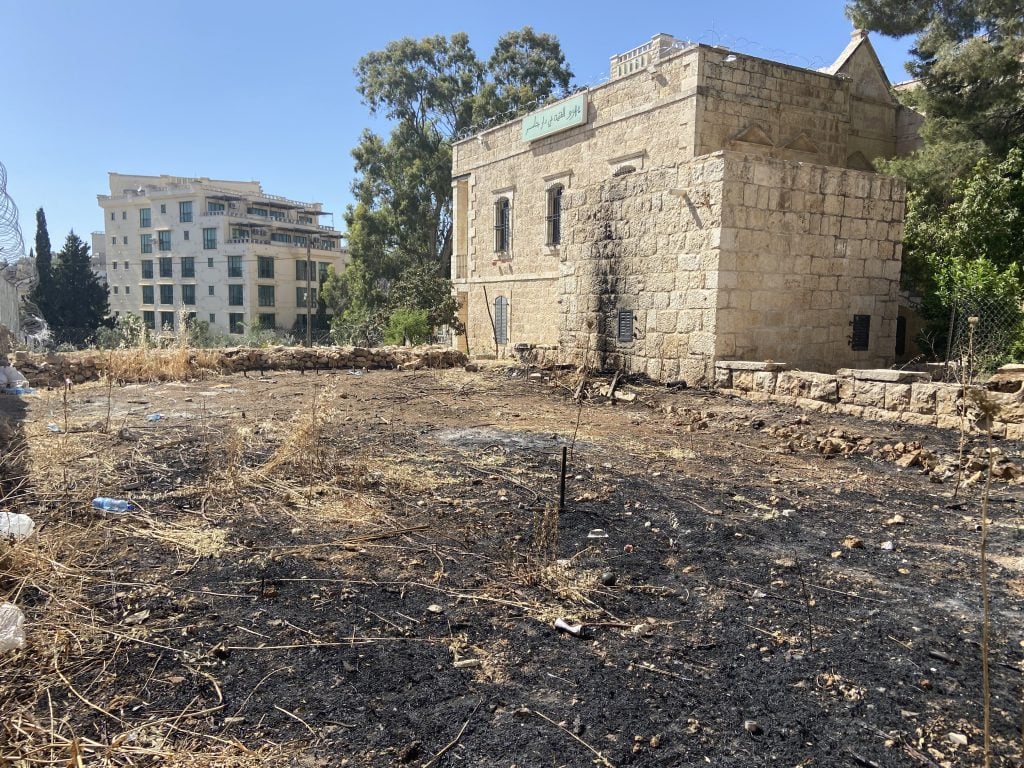
The Urban Farm at Dar Jacir burnt to the ground. Photo by: Aline Khoury.
Tensions Explode
Over the past two weeks, the world has watched in horror as Israelis and Palestinians go to battle again. Ground zero in the current wave of violence is the Sheikh Jarrah neighborhood in East Jerusalem, where 27 Palestinian families were threatened in early May with evictions.
The levels of violence, unprecedented since the last Gaza War in 2014, continue to escalate, particularly in Gaza, where airstrikes by IDF are causing civilian casualties and destroying homes, medical centers, and even buildings that house local and international media outlets.
From Gaza, Hamas, the Palestinian Sunni-Islamic fundamentalist organization, continues to fire rockets into Israel in retaliation for aggressive evictions in East Jerusalem and after Israeli police clashed with Palestinians near the city’s Al-Aqsa Mosque, the Islamic world’s third holiest site.
Shards of broken glass litter Eltiqa and Shababeik, two contemporary art galleries in Gaza City, along with damaged artworks. With Gazans seeking shelter, it’s impossible to start repairs now.
Casualties and destruction have been greater on the Palestinian side. The death toll in Gaza has climbed to more than 200, including around 60 children and 35 women.
The U.N. said 52,000 people have now been displaced and Reuters reports that nearly 450 buildings in the Gaza strip have been destroyed or badly damaged, including six hospitals. In Israel, the death toll is now at 10, according to Israel’s emergency service.
In the city of Bethlehem in the southern West Bank, Dar Yusuf Nasri Jacir for Art and Research, an artist-run initiative founded in 2014, was raided by the Israelis, and badly hit by Israeli projectiles. The center, co-directed by Hugo Boss Prize-winning artist and filmmaker Emily Jacir with Aline Khoury, is located in Jacir’s 19th-century family home, which was built by her great-great-grandfather. Its stands perilously close to Israel’s separation wall, and prior to renovations, was repeatedly damaged during confrontations between Palestinian civilians and Israeli soldiers.
“Dar Jacir was hit very badly every night and day this week, being rained upon by tear gas canisters, the skunk truck, sound bombs, stun grenades,” Jacir told Artnet News. “Our hard drives, computer, camera equipment—all of it was taken by the army. Twelve soldiers ransacked Dar Jacir and we are finding more things as we comb through the house. Our urban farm was burnt to the ground. Our resident artists have been forced to leave.”
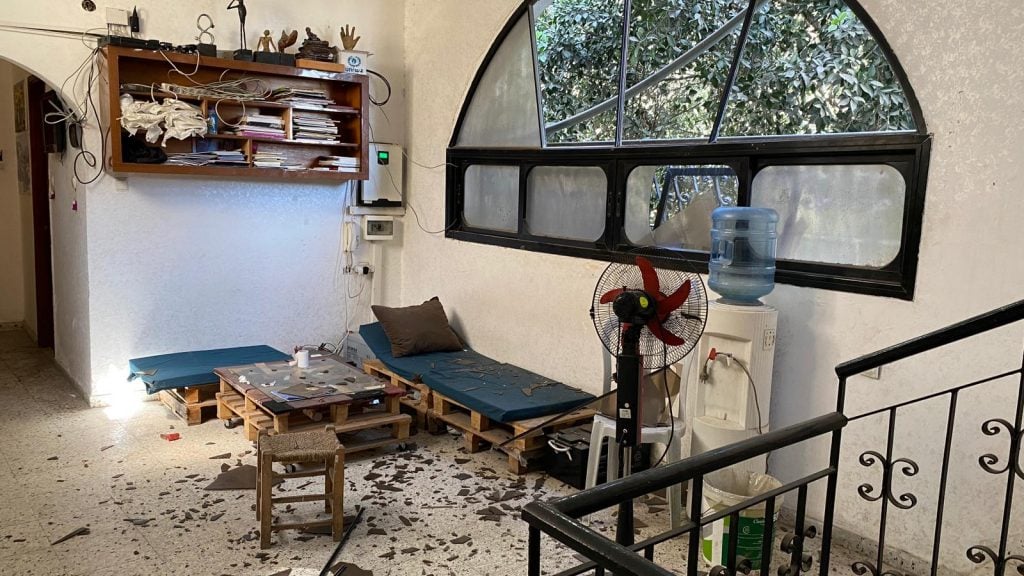
Shababeik Gallery in Gaza City, following attacks.
Palestinian Artists Protest
As horrific scenes of violence stream across social media, artists have hit the streets to protest.
Jordanian-Palestinian Wala Sbeit, the lead artist in 47 Soul Band, a Palestinian Jordanian electronic music group, was arrested in Haifa on May 13 for filming protests on his phone, which he says is still with the Israelis.
Palestinian actress Maisa Abd Elhadi, who starred in artist Larissa Sansour’s film In Vitro, which premiered at the Danish Pavilion at the Venice Biennale in 2019, was injured by a stun grenade. And last week, Turner Prize-winning Jordanian artist Lawrence Abu Hamdan gave his Instagram account to fellow artist Inas Halabi to report live on the violence waged by police on protesters in Jerusalem. Several others were arrested for their actions and injured by the eruption of violence.
“Art needs to be used as a tool for change and this is why we need to keep it clear from injustice,” artist Khaled Jarrar, who recorded protesters being attacked by police in Ramallah, told Artnet News.
Yet culture remains a major flashpoint. Last July, Rania Elias and her husband, Suhail Khoury, the directors of the Yabous Cultural Center in Jerusalem, were arrested by Israeli police for promoting “Palestinian culture” and under suspicion of “funding terrorism.” Both were released and continue to run the center, but under increasing restrictions.
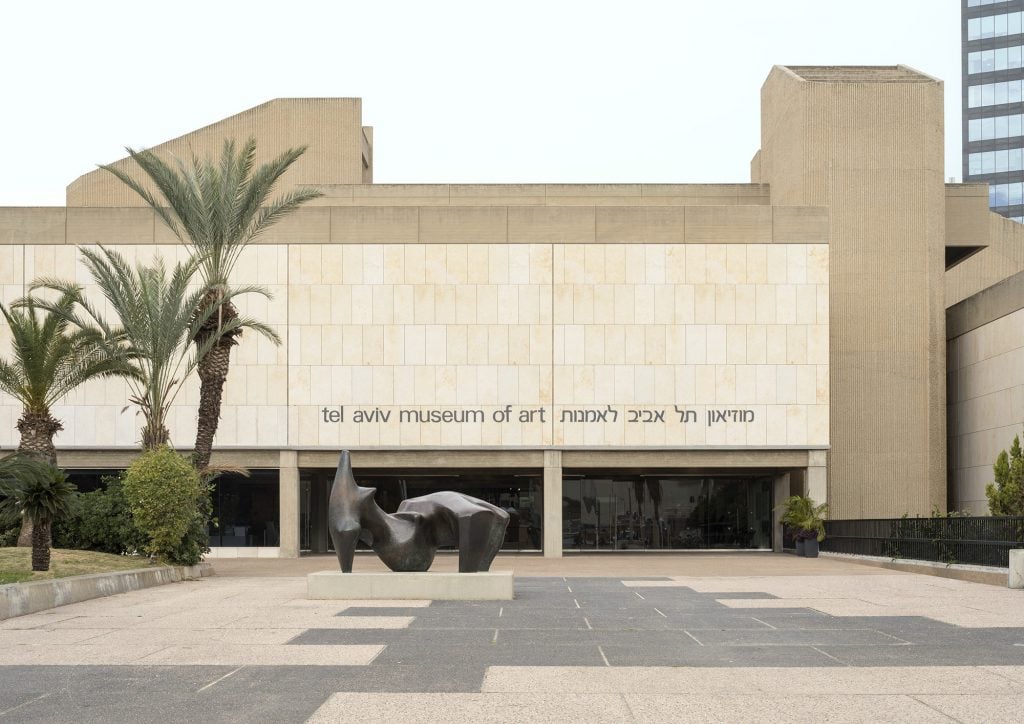
The main building of the Tel Aviv Museum of Art. Photo: Elad Sarig.
Voices From the Other Side
In Israel, all galleries and museums are closed until further notice. As Hamas fires rockets, people retreat into bomb shelters.
At the Tel Aviv Museum of Art, Israel’s largest art museum, many works of art have been taken down to protected basements for fear of damage. Thousands of rockets have thus far been fired near the museum.
“Innocent civilians are suffering and injured inside Israel and on the other side in Gaza, and our hearts are crushed,” Tania Coen-Uzzielli, the museum’s director, told Artnet News. “We hope that the leaders of Israel, the region, and the world will be able to lead to immediate calm and a ceasefire.”
Coen-Uzzielli said the museum will continue to run educational programs for Jewish and Arab children. “We are committed to creating a better future and planting hope for all our children in this complex place that currently is in a deep, excruciatingly painful crisis,” she said.
Several Israeli artists have spoken in favor of the Palestinians’ right of return and the BDS (Boycott, Divestment and Sanctions) movement that aims to press Israel to change its policies towards Palestinians.
“The uprising throughout Palestine makes absolutely urgent the calls for Palestinian liberation,” Israeli-British architect and founding director of Forensic Architecture Eyal Weizman told Artnet News.
“As somebody that has grown within and grown to refuse this environment of Israeli domination, I believe that the implementation of the Palestinian refugees’ right of return is our only hope for a democratic future in Palestine. No one can seriously argue against the moral basis for BDS.”
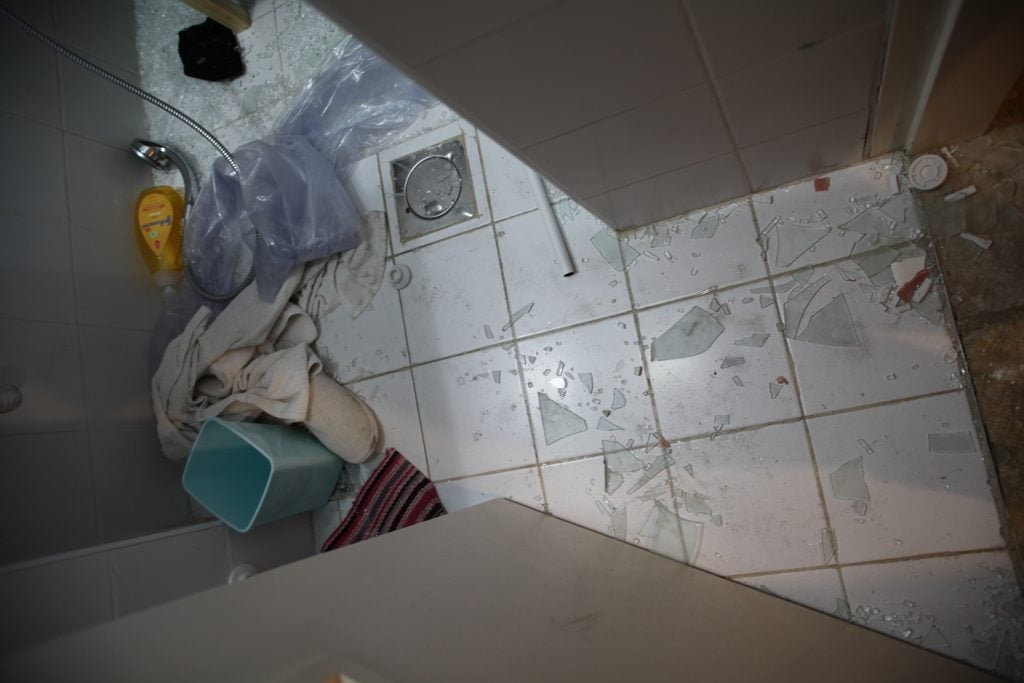
Dar Jacir artist residency bathroom breached and ransacked. Photo by: Shuruq Harb.
A Call to Be Heard
Yet many Palestinians feel they have yet to be heard.
“The silence from the international art community has been infuriating because it is only through outside voices that we will get through this,” Ramallah-based artist Dima Srouji said. “Palestine is an example of an active apartheid.”
But for many, this time feels different, perhaps because the blast of violence has been widely broadcast over social media.
“When I began my career as an artist in the ’90s, you couldn’t even say the word Palestine,” Jacir said. “The international art community has historically been silent, but there is huge shift this time, with the art world suddenly expressing solidarity and supporting Palestine.”
One example is the group BDZ (Boycott/Divest Zabludowicz), a collection of artists, curators, activists, and writers who published a statement last Friday condemning Israel’s recent attacks on Al Aqsa Mosque in Jerusalem and the continued eviction of Palestinians from Sheikh Jarrar. They called on other cultural workers to join them.
“We would like our friends and colleagues around the world to demand from their governments to pressure Israel to cease its aggression immediately,” said Fida Touma, the director general of the A.M. Qattan Foundation, a culture and education nonprofit organization.
Among Palestinians, there’s a dark joke circulating now that things must get worse before they can get better. “I think the most important thing that has happened in the last weeks is the complete failure of the 73-year-long project of Israel to divide us as a people—visible for the whole world to see,” Jacir declared.
“What we need,” said Adila Laïdi-Hanieh, director of the Palestinian Museum, “is for the international art world to show courage and stand with Palestine vocally, just like they stand for decolonization, Black Lives Matter, and LGBTQ rights.”
